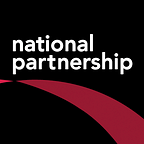8 Dirty Facts About Clean Water Access in the United States
Access to clean, potable water is critical to our daily lives. People need water to drink, to bathe, to wash their hands, to cook, to survive and, ultimately, to prosper. That’s why it’s completely unacceptable that millions of individuals living in the United States face the daily reality of exposure to contaminated water sources that present serious risks to reproductive and overall health. And those most at risk are women of color.
1. Drinking water in the United States gets a “D” grade
These scary facts say it all:
• 77 million people are exposed each day to contaminated water
• 15 to 22 million people nationally are still served by lead water lines
• 1.6 million people live without full indoor plumbing
• U.S. military sites have many of the nation’s highest levels of groundwater contamination with polyfluoroalkyl substances (PFAS)
Sources: American Society of Civil Engineers, Natural Resources Defense Council, Water Finance & Management, Water Quality & Health Council, State of Rhode Island Department of Health
2. Federal funding for water infrastructure has plummeted for 40 years
America’s failing water infrastructure is a result of decreased federal funding for these critical systems. On a per capita basis, from 1977 to 2014, federal spending on water infrastructure fell from $76 per person to only $11 per person. State and local governments bear the burden of 96 percent of all public spending on water and wastewater utilities, inevitably creating a patchwork where communities of color are less likely to be served by clean water systems, as well as by other social service systems.
Source: Value of Water Campaign, University of North Carolina School of Government (Environmental Finance Center Blog)
3. Water costs have more than doubled since 2000
The affordability of clean, safe water is an increasingly dire problem. State and local governments often pass the cost of water infrastructure improvements on to consumers, increasing the amount people pay for their water each month. The average monthly residential bill for drinking water alone has gone up 48 percent since 2010. Without a safety net, the rising costs of drinking water and the growing strain on water infrastructure will further threaten the water security of communities struggling to make ends meet and impacted by economic injustice and discrimination.
Sources: Brookings Institution, Circle of Blue
4. The Trump administration has shamelessly gutted clean water regulations
The EPA has rolled back critical environmental protections, is conducting fewer inspections, and imposing lower penalties on many polluters, which is making it easier for corporations to dump pollutants into our water systems. EPA penalties for polluters are up to 5 times greater in white communities than they are in communities of color for comparable violations. And the Trump administration is actively suppressing research about the health impacts of contaminated water. Its censorship of scientific research jeopardizes transparency and creates a serious threat to public health.
Sources: Asian Americans Advancing Justice — Los Angeles, Steam Protection Rule, Climate Science Legal Defense Fund, Democracy Forward, Environmental Integrity Project, Environmental Protection Network, Government Accountability Project, Greenpeace, Union of Concerned Scientists
5. Racism ruins everything … even water
Environmental racism describes the disproportionate impact of environmental hazards and injustices on communities of color. For example, failing water infrastructure and substantial water contamination are most pronounced in communities of color as a result of historical and ongoing environmental racism, particularly policies such as redlining — federally sanctioned unfair lending practices that denied home loans to families of color, especially Black families — and discriminatory land-use patterns.
Source: Greenaction for Health and Environmental Justice, “If You Want Clean Water, Don’t Be Black in America” (Brentin Mock)
6. All of the above is detrimental (even devastating) to reproductive justice
Reproductive Justice is grounded in the right to have a child, to not have a child, and to raise children in safe and healthy environments. These basic rights are under attack, and women of color across the country are fighting to hold the line. No matter one’s gender, sexual orientation, immigration status, economic status or race, all people should be able to live in a safe and healthy environment and be able to access and afford water that is free from contamination — because unsafe water, for example, can interfere with reproductive health by increasing the chances of experiencing infertility or jeopardizing a person’s ability to have a healthy pregnancy.
Source: United Nations
7. Let’s not forget the existential threat of climate change
Climate change has and will continue to add additional stressors to water systems in the United States, the harmful consequences of which will also primarily impact communities of color. Black and Latinx communities disproportionately live in low-lying flood zones and other vulnerability zones located near “industrial facilities that manufacture chemicals, treat water or wastewater, produce bleach, generate electric power, refine petroleum and produce pulp or paper.
Sources: Black Women’s Health Imperative, Natural Resources Defense Council
8. And the deadly coronavirus pandemic
According to the Centers for Disease Control and Prevention, there’s no evidence that the virus that causes COVID-19 can be spread through drinking water or use of pools or hot tubs. That’s the good news. But the government’s guidance to wash hands frequently exacerbates existing problems for communities that do not have access to clean water. This is certainly a huge concern for the global community, but it also affects too many people in the United States as well.
Sources: Cleveland Clinic, UNICEF
The solution?
Read the groundbreaking new report, Clean Water and Reproductive Justice: How Lack of Access Harms Women of Color, by the Sierra Club, National Partnership for Women & Families, National Asian Pacific American Women’s Forum, and In Our Own Voice: National Black Women’s Reproductive Justice Agenda.
